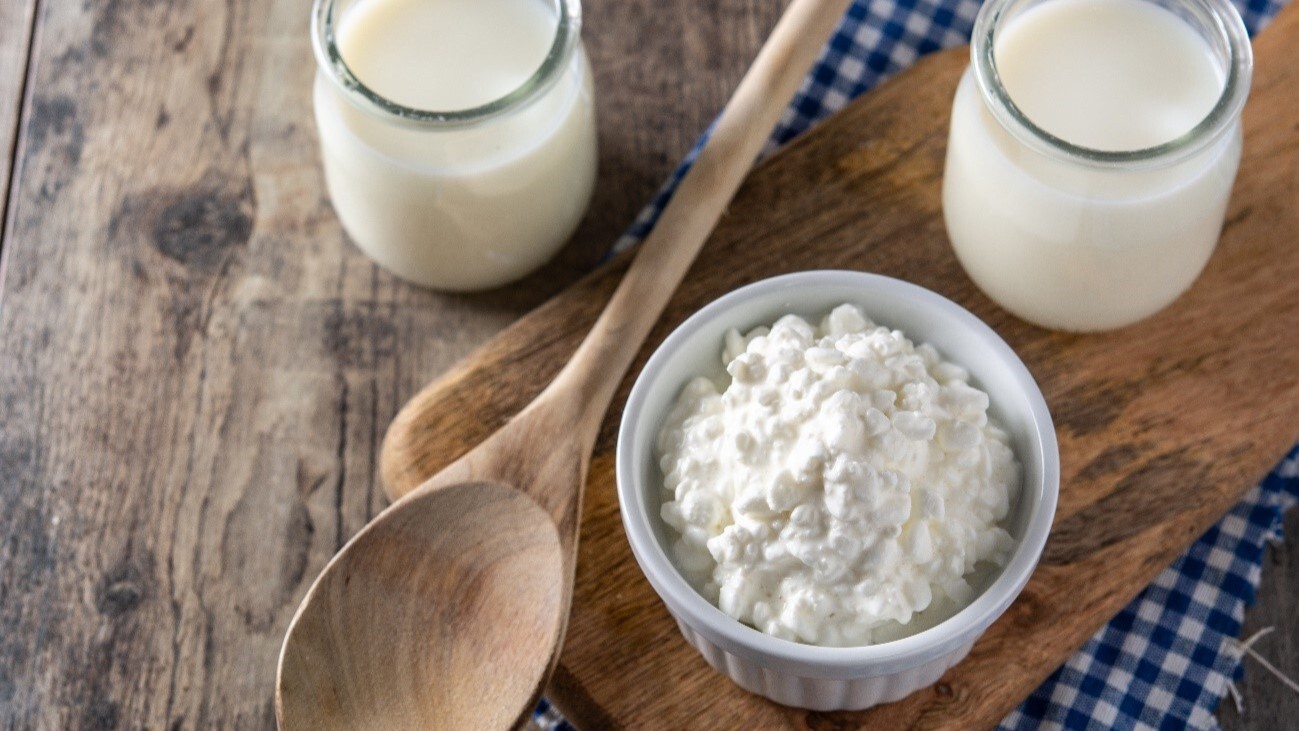The Institute of Agrochemistry and Food Technology, a research center of the UV Science Park, demonstrates in in vitro tests that this drink made from fermented milk regulates different immune signaling pathways at the intestinal level. After analyzing the composition of commercial kéfires and probiotics in capsule form, they found significant differences in their microbial composition and ability to influence the body
A study led by the Institute of Agrochemistry and Food Technology (IATA), located in the scientific-academic area of the University of Valencia Science Park (PCUV) and belonging to the Higher Council for Scientific Research (CSIC), has analysed the microbial composition and effects on the signalling pathways, the communication channels of the immune system, of eleven commercial kefirs, comparing them with four pharmaceutical probiotics. The study, published in the journal Food Research International, reveals significant differences in the ability of kefir to modulate the intestinal immune system in vitro. The results showed that this beverage prepared from fermented milk has a more complex and diverse immunomodulatory effect, possibly due to the interaction between bacteria and fungi that coexist in the drink.
Kefir is a traditional drink made from the fermentation of milk by a combination of bacteria and yeasts. Unlike yogurt, which is fermented only by bacteria, kefir houses a much more diverse microbial community. This is confirmed by the IATA-CSIC study, which found a high variability in the microbial composition, both bacterial and fungal, of the kefirs analyzed. Bacteria such as Lactococcus lactis and Streptococcus thermophilus, which are common in milk fermentation and have beneficial effects on intestinal health, predominated in most of them. In others, a higher presence of yeasts such as Kluyveromyces marxianus or Saccharomyces cerevisiae was detected, associated with the production of compounds with antioxidant and immunomodulatory effects.
Interaction between bacteria and fungi
"Commercial kefirs show significant differences in their composition and effects on intestinal immune signaling pathways. Having clear data on their composition would help consumers to make more informed product choices", explains Marta Arroyo, IATA-CSIC researcher and lead author of the study.
Immune signaling pathways act as a molecular language that connects microorganisms, food bioactive compounds, intestinal cells and the immune system. Through complex cascades of biochemical reactions, these pathways make it possible to recognize external signals, transmit information and coordinate responses that can range from defense against pathogens to promoting tolerance and immune balance.
"Commercial kefirs show significant differences in their composition and effects on intestinal immune signaling pathways. Having clear data on their composition would help consumers to choose products more informed", Marta Arroyo, IATA-CSIC researcher and lead author of the study
To assess the survival ability of kefir microorganisms and their impact on the immune system, researchers from the IATA Integrative Approaches in Food Toxicology group-CSIC simulated a gastrointestinal digestion process and analyzed the effect of samples on cellular models. In addition, some kefirs showed a remarkable resistance to simulated digestive conditions, which may encourage the arrival of more live microorganisms into the intestine.
Activating specific immune pathways
The study also found that the microbial diversity of kefir directly influences its ability to modulate different intestinal signaling pathways related to the immune system. Increased bacterial diversity was associated with more intense activation of aryl hydrocarbon receptor (AhR) and toll-like (TLR), key proteins in the regulation of immune response; while increased yeast diversity was related to more attenuated responses.
"This factor could enhance the immunomodulatory effects of kefir and differentiate it from some conventional probiotic supplements by its viability to reach the intestine and its ability to activate different signaling pathways. In addition, the interactions between the food matrix and micro-organisms is an under-studied area that requires more attention. The balance between bacteria and fungi seems to be decisive in the ability of kefir to modulate intestinal signaling pathways", explains Silvia Moriano, postdoctoral researcher at IATA-CSIC and first author of the study.
"Interactions between the food matrix and micro-organisms is an under-studied area that requires further attention. The balance between bacteria and fungi appears to be decisive in the ability of kefir to modulate intestinal signaling pathways". Silvia Moriano, IATA postoctoral researcher and first author of the study
More details on microbial composition
The study underlines the importance of accurately characterising micro-organisms present in fermented products or those containing live micro-organisms, as although they fall under the same product definition, there are significant differences between the tested kefires. "Given the differences observed between brands and formulations, it would be advisable for manufacturers to include more detailed information on microbial composition and their viability in the labelling, not only of kéfires but also of other fermented products," says Arroyo.
The research team highlights that they are working to identify microbial strains and metabolites responsible for these effects, and that it is necessary to conduct human clinical trials to confirm their physiological relevance, considering the complexity of establishing causal relationships and responses associated with each individual’s diet.
Source: CSIC Delegation Comunitat Valenciana
Silvia Moriano-Gutierrez, Elena Rengel Gómez, Giulia Menzio, Beatriz de la Fuente Miguel, José V. Gimeno-Alcañiz, María José Gosalbes, Nuria Jiménez-Hernández, Marta Arroyo. Commercial milk kefir exerts immunomodulatory TLR-mediated responses on in vitro models of the human intestinal epithelium. Food Research International. DOI: https://doi.org/10.1016/j.foodres.2025.117528
--
Recent Posts


